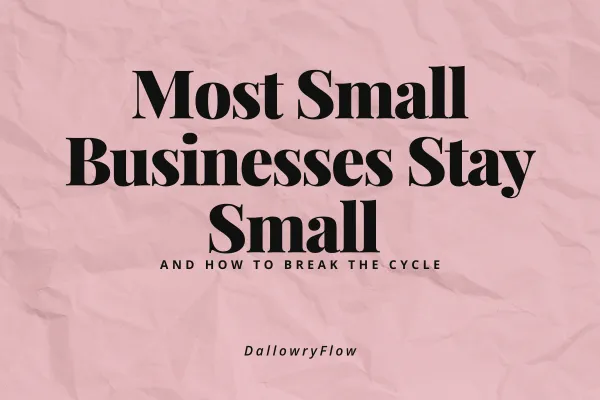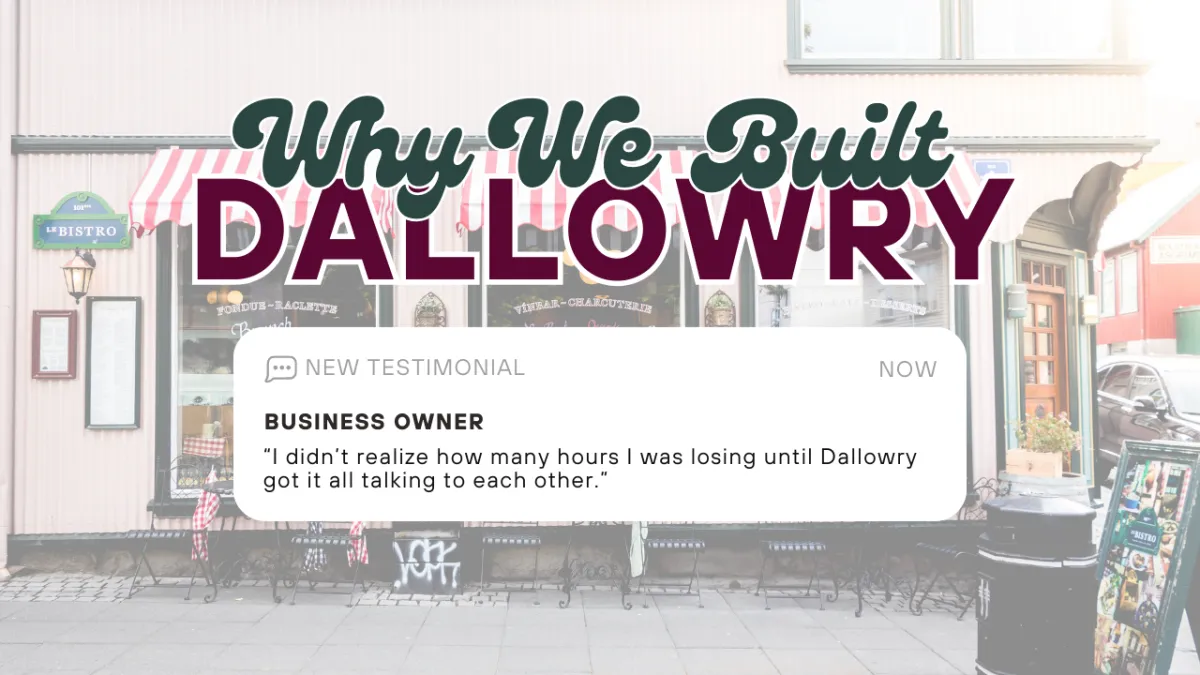TOOLS, Tutorials,
and TRUTH BOMBS
We DON'T gate-keep the good stuff.
Here you’ll find real-world systems, smart strategies, and practical tutorials to help you automate smarter, market better, and scale faster—without losing your mind in the process.
From backend workflows to business mindset, this is the place to come when you want answers that actually move the needle.
EVERYTHING
we've learned SHARED

Why Most Small Businesses Stay Small (And How to Break the Cycle)
Small businesses are full of big dreams. They’re started by people who want to do something meaningful, make a living, and serve their communities. But many of those same businesses hit a wall. They stay small—sometimes for years. Not because the product isn’t good or the owner isn’t trying. But because the business gets stuck in a cycle that’s hard to break.
Let’s take a closer look at what keeps businesses small, and more importantly, what you can do to move past it.
Most small business owners start by doing everything themselves. That makes sense in the beginning. You’re saving money. You know the job. You trust yourself to do it right. But this can turn into a trap. When you’re the only one handling orders, writing emails, answering calls, running your website, and planning your next move—you run out of time. You become the limit to your own growth.
Another common problem is unclear systems. Many small businesses run on memory, sticky notes, or what worked last time. There’s no written process, no real schedule, and no clear way to hand things off. That means everything takes longer than it should. You redo tasks, forget steps, or struggle to train help. And when something changes—like you get sick or want to take a break—everything falls apart.
It’s also easy to stay busy without making real progress. You check your inbox. You post on social. You fulfill orders. But you never stop to ask: Is this moving me forward? Or just keeping me afloat? Without clear goals and systems, it’s hard to tell the difference. And over time, that can lead to burnout.
Some businesses stay small because they’ve hit a ceiling with the tools they use. Maybe they’re using free apps that don’t talk to each other. Or software that’s too clunky or confusing. When your tech isn’t working with you, it adds stress instead of solving it. You waste hours doing things that could be done in minutes—if the right system was in place.
Mindset plays a role, too. Many business owners believe they have to hustle harder to grow. Or they worry that if they step back, everything will fall apart. This keeps them stuck in the cycle of overwork. But growth doesn’t come from doing more. It comes from doing the right things in the right order—and building a business that runs on systems, not just on effort.
So how do you break out of the cycle?
Start by writing things down. Take note of the tasks you repeat often. Write out the steps, even if they seem simple. This turns your habits into processes. And once a process is written, it can be improved. It can be handed off. It can be automated.
Next, get clear on what success looks like for you. How many hours do you want to work? How much money do you want to earn? What kind of help would make your life easier? Without clear goals, it’s hard to build a plan. But once you know what you’re working toward, every decision becomes easier.
Then take a look at your tools. Are they helping—or just hanging around? You don’t need more software. You need the right system. Something that helps you track leads, book clients, send emails, and stay organized. That’s where platforms like DallowryFlow come in. They’re built to keep small businesses running smoothly, even when you’re wearing ten hats.
Another key is automation. You don’t have to do everything by hand. Simple things like sending welcome emails, booking meetings, or following up with leads can all happen automatically. That frees you up to focus on things that actually grow the business—like building relationships, improving your offers, or creating better content.
It’s also helpful to stop doing things that don’t move the needle. Just because you’ve always posted on social at 3 p.m. every day doesn’t mean it’s still worth it. Track your results. Ask yourself what’s actually working. Then do more of that—and less of the rest.
And finally, give yourself permission to grow. That might mean raising your prices. Hiring help. Saying no to the wrong clients. Or investing in better systems. These decisions can feel scary—but they’re part of building a business that grows beyond you.
Most small businesses stay small because they never get around to building the systems that support growth. They rely on memory, hustle, and hope. But when you start documenting, streamlining, and automating—even just a little—you create space. And in that space, your business can finally expand.
You don’t have to be perfect to grow. You just need to build things that work when you’re not watching. That’s how you grow from stuck to scaling. That’s how you break the cycle.




